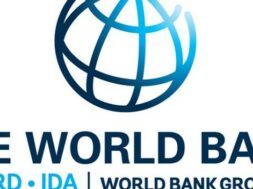
Economy@2023: Stagflation to pull down world’s GDP to 2.9%, India’s at 7.5%, says WB
Virendra Pandit
New Delhi: As the long-term impact of the Covid-19 pandemic and the Russian invasion of Ukraine on the global economy unfold, the World Bank on Wednesday forecasted stagflation could pull down world economic growth to 2.9 percent in 2023, and Indian economic growth in FY23 to 7.5 percent.
Rising inflation, supply chain disruptions, and geopolitical tensions could taper recovery from the pandemic, it said.
In his Forward to the latest issue of the Global Economic Prospects, World Bank President David Malpas said after multiple crises, long-term prosperity will depend on returning to faster growth and a more stable, rules-based policy environment.
“There is good reason to expect that, once the war in Ukraine stops, efforts will redouble — including by the World Bank Group — to rebuild the Ukrainian economy and revive global growth.”
The global growth may slow down sharply from 5.7 percent in 2021 to 2.9 percent this year. “This also reflects a nearly one-third cut to our January 2022 forecast for this year of 4.1 percent,” he said.
“The surge in energy and food prices, along with the supply and trade disruptions triggered by the war in Ukraine and the necessary interest-rate normalization now underway, account for most of the downgrade,” Malpass added.
In April, the WB had trimmed the forecast of India’s GDP growth from 8.7 in FY22 to 8 percent for FY23, and has, for a second time this year, shrunk it further to 7.5 percent, showing the mounting pressures on the country’s economy.
“In India, growth is forecast to edge down to 7.5 percent in the fiscal year 2022/23, with headwinds from rising inflation, supply chain disruptions, and geopolitical tensions offsetting buoyancy in the recovery of services consumption from the pandemic,” the World Bank said, according to the media reports.
Fixed investments undertaken both by the government and the private sector will also support India’s GDP growth. The government has introduced incentives and reforms to improve the business climate. This forecast reflects a 1.2 percentage point downward revision of growth from the January projection, the Bank added.
“Growth is expected to slow further to 7.1 percent in 2023-24 back towards its longer-run potential,” it noted.
The rise in prices across all items from fuel to vegetables and cooking oil had pushed the Wholesale Price Index (WPI)-based inflation to a record high of 15.08 percent in April and retail inflation to a nearly eight-year high of 7.79 percent.
In April, the Reserve Bank of India (RBI) had also cut the forecast from 7.8 to 7.2 percent amid volatile crude oil prices and supply chain disruptions because of the ongoing Russia-Ukraine war.
High inflation prompted it to hold an unscheduled meeting in May to raise the benchmark interest rate by 40 basis points to 4.40 percent. The central bank again hiked key lending rates by 50 basis points, or 4.9 percent, on Wednesday. It also said inflation could hurt the Indian economy for three more quarters until almost the end of the current fiscal.
Before the World Bank’s forecast, global rating agencies had also slashed India’s economic growth in the current financial year. In May, Moody’s Investors Service had, citing high inflation, trimmed the GDP projection from 9.1 percent earlier to 8.8 percent for the calendar year 2022.
S&P Global Ratings had cut India’s growth projection from 7.8 percent to 7.3 percent in FY23, citing reasons like rising inflation and the lengthening Russia-Ukraine war.
When the previous financial year ended in March, Fitch had cut India’s growth forecast from 10.3 percent to 8.5 percent. The International Monetary Fund (IMF) lowered the projection from 9 to 8.2 percent. The Asian Development Bank (ADB) pegged India’s growth at 7.5 percent.
The World Bank report stated that India’s growth slowed in the first half of 2022 as a surge in the pandemic cases disrupted the economy, accompanied by more-targeted mobility restrictions, and by the war in Ukraine.
Now, the recovery is facing headwinds from rising inflation.
While the unemployment rate declined to the pre-pandemic levels, the labor force participation rate remained below the pre-Covid-19 levels and many workers shifted to lower-paying jobs.
In India, the focus of government spending has shifted toward infrastructure investment, labor regulations are being simplified, underperforming state-owned assets are being privatized, and they expected the logistics sector to be modernized and integrated, the World Bank said.














